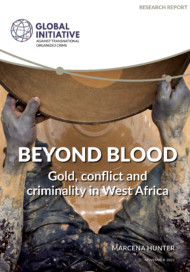Posted on 26 Oct 2017
For many nations, the irregular migration political debate has been deeply polarised by irreconcilable, value-laden ideological perspectives. On one side sit the humanists upholding human rights arguments; on the other, those espousing isolationist security-focused perspectives, seen as protecting the nation-state from those it deems to be something ‘other’ than citizens. More often than not, somewhere in the middle of this political ideology spectrum are those trying to operate orderly and sustainable migration programs, which not only discourage irregular migration but also stop the unnecessary loss of irregular migrants’ lives.
Putting those philosophical debates aside, the global drivers for the irregular movement of people, from human security to economics, are growing, not dissipating. In 2016, the UN High Commissioner for Refugees reported that there were 65.6 million ‘forcibly displaced people worldwide’, 22.5 million refugees and 10 million stateless people. Globally, there are some 767 million people living below the poverty line. In Africa alone, there are some 200 million people ‘aged between 15–24 and this will likely double by 2045’. While these figures are startling, the fact that in 2016 only 189,300 refugees were resettled highlights the scale of the likely demand for irregular migration.
Put very simply, the demand for irregular migration services is rising dramatically in origin and transit countries across the globe. Limited economic opportunities caused by such factors as ballooning youth populations, endemic corruption and unskilled labour surpluses are creating waves of irregular economic migrants who, under normal circumstances, have no likelihood of being accepted in formal migration programs.
Declining human security conditions in Syria, Afghanistan, Central America, North Korea, Iraq and Iran are also creating mass migration crises of a magnitude that we’ve not seen since the end of World War II.
Unfortunately, destination countries’ refugee and migration programs can’t meet the demand from those who want to migrate. Out of these fundamentals rises a growing demand for alternative migration pathways.
It may be clichéd to argue that the world is experiencing unprecedented uncertainty about economic, human and global security but, unfortunately, that is the case. And, in the face of such uncertainty, isolationism is on the rise across the Western world. Hundreds of years of regional and global human migration trends have given way to new legislative constructs that have criminalised irregular migration and those involved in it. In this trend, the complexity of the people-smuggling policy challenge is oversimplified into a moralistic zero-sum game, with labels of ‘good’ and ‘evil’.
Today the Australian Strategic Policy Institute (ASPI), with support from the Global Initiative Against Transnational Organised Crime ASPI is releasing its latest Strategy ‘Global People Smugglers 2017’. This report has drawn together the work of authors from across the globe from multiple disciplines to explore the world-wide phenomenon that is people smuggling.
Much has already been published on irregular migration from the perspective of the migrant so the authors of this latest research focus on people-smuggling syndicates globally. They provide an analysis of the various people-smuggling syndicates operating in the globe’s people smuggling hot-spots. This report provides a concise analysis of each people smuggling hot-spot, with accompanying policy recommendations for interventions.
In political and policy circles, there’s no ambiguity in statements such as ‘People smuggling is a crime’. The prevailing perspective is that regardless of the people smugglers’ motivation or role within a syndicate, people smuggling is a criminal activity. However, in many cases globally, people smuggling isn’t viewed as a criminal activity by irregular migrants or their communities. Instead, people smugglers are seen in a much more positive light. They’re perceived as offering a service that allows their customers to access a product that would otherwise not be available to them.
In Africa and the Americas, people-smuggling operators bring much-needed, and otherwise unavailable, income into the community. In such places, even when people smuggling is criminalised, there’s no guarantee that community or irregular migrant perspectives will change.
The report finds that the decentralised yet globally networked nature of people-smuggling activities, fuelled by unprecedented global people movements, ensures that this challenge will continue to be highly resilient in the face of policy interventions. However, through analysis of the organisation of those networks, as provided by this report, policymakers can develop a better understanding of the various contextual elements of people-smuggling operations that are vulnerable to disruption.
Even when people-smuggling ventures are halted, as in the case of Australia, there remain a large number of irregular migrants who, for their own safety and for economic reasons, are willing to engage in high-risk activity to get to their desired locations. Without supporting policies, the underlying pull and push factors for irregular migration continue and success against the smugglers remains fragile and fleeting.



